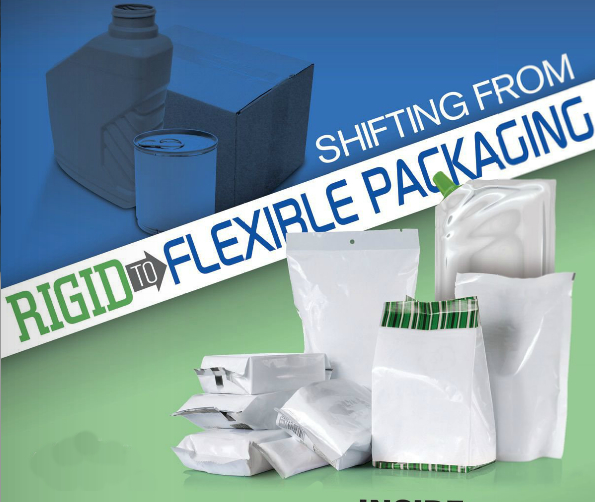
The way in which consumers view arid interact with packaged products is changing.
With a growing focus on convenience and sustainability, traditional pack types are being replaced by innovative and flexible options designed to meet these consumer needs.
The flexible packaging market is estimated to be worth $351 billion by 2018’ meaning that it is rapidly gaining market share from other sectors such as traditional rigid packaging.
There have been many exciting new product developments which have helped to demonstrate to consumers the true potential of flexible packaging.
Examples
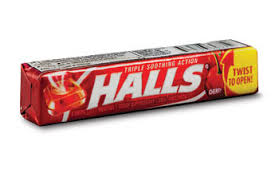
include the Halls "twist-off* Stick-pack converted by Sonoco & Co - a flexible package which allows one sweet to be dispensed without losing others - and the Savvy Green Laundry Detergent Pouch, which displays high-end graphics;and offers easy dispensation.
So, what sets these products apart from the rigid packaging we are more used to seeing on supermarket shelves?
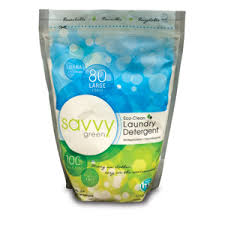
1. LIGHTWEIGHTING
The bottled water sector is a prime example of a market in which materials have gotten lighter and lighter overtime producing less waste.
However, manufacturers have now reached the stage where PET bottles cannot be made much lighter.
Therefore, the next step in this process is to replace plastic bottles with lightweight, flexible pouches.
This development has been gaining traction over the years, although widespread usage has not yet occurred. The primary reason for this has been issues with high-speed filling - while PET bottles can be filled at speeds of 1,500 packages per minute, the process of filling pouches fells behind at only 400 packages per minute.
However, some of the newer PET bottle-fiIIing technologies are designed to transport the bottle through the cycle via the neck, a breakthrough which will also allow the introduction of pouches using the same technology. This is forecast to occur as early as 2014’ and the use of pouches would allow water companies to reduce their packaging weight by 50%.
2. EASE OF DECORATION
Part of the total cost of any rigid package is the label, and these are applied as part of the filling process.
Labels are supplied from a different supplier than the bottles, meaning that they often become a bottleneck in the filling process.
With flexible packaging such as pouches, the converting of the pouch generally includes full printing features along with the lamination of the films if necessary.
This printing only marginally increases the cost of the pouch and has no effect on the filling process itself.
Printing options for flexible packaging are endless, and can be instantaneously changed if required
Another key decorating feature is the printing of security or brand identity graphics, which is just being developed for flexible packaging.
The challenge associated with this new technology is: how can security graphics be included in the packaging design without making it obvious to the potential counterfeiter? Solutions include pigment additives which only appear under certain lighting and inks which disappear and reappear depending on environmental conditions.
Such technology simply isn't possible with rigid alternatives.
3. BARRIER PROPERTIES
One of the main advantages of flexible packaging over rigid packaging is the ability of the company to "dial-in" the appropriate barrier for the product and end-use.
Many products, such as juices, wines and milk, require a reasonable oxygen barrier.
Bottles made from PET, glass or multi-layer paperboard laminates provide a barrier for all products whether it is required or not.
A flexible package can be supplied with barrier properties which can provide anything from moisture and aroma protection to essentially tine same barriers as glass. Aluminium foil has been used for many years as the ultimate flexible barrier material, although its properties are compromised by the most recent flexible packaging developments, such as stand-up pouches.
When creased in this way the foil can fracture, leading to pinholes which let in oxygen, water and light.
To combat this, new flexible materials such as styrene-acrylonitrile (SAN) have been developed as foil-replacement. SAN is tough even in thin layers, and recent production methods have improved the flexible properties of this resin.
4. PACKAGING VARIATION AND DISPENSING
Packages made from flexible plastic films can be made into practically any shape imaginable, and the inclusion of handles, fitments and opening features is quite straightforward.
Today's pouches often have advanced dispensing functions such as screw-top caps and laser-scored tear features.
Flexible packaging can also be used to enhance rigid packs; an example being shrink labels used for plastic bottles. These labels not only provide attractive decoration features, but also additional levels of barrier protection against oxygen or light.
Other key technical developments include fitments for use with flexible packaging for liquids, with traditional dispensing taps leading to connecting valves, one-way dispensers and pop-up straws.
Connecting valves allow consumers to connect a pouch with dishwashing soap directly to the appliance, so the proper amount of detergent is dosed every cycle and no clean-up is required.
5. LARGER SIZES
As technology has improved, the flexible packaging market size has increased and the ability to produce packaging of ever-larger sizes has become possible. Larger retail flexible packages are now becoming the norm as consumer packaged goods and retail outlets alike take advantage of larger-format packaging. For example, the classic paperboard carton and unprinted flexible liner used for dry cereals is rapidly being replaced with flexible pouches incorporating high-end graphics and easy to reclose features. These packages are typically much larger.

Kraft Food's YesPack for salad dressings and other condiments recently won gold at the Global Packaging Association Awards.
Incorporating many of the benefits of flexible packaging into a large format package for food-service liquids, the pouch makes it easy to dispense product, and makes sure every last drop is utilised.
We can expect to see many new types of pouches being introduced for large format liquid packaging as consumers better understand the benefits and converters develop new technologies to their fullest.
From Smith Pira Report
"The Future of Global Flexible Packaging to 2018"
[ add comment ] ( 37 views ) | permalink |




 ( 3 / 2216 )
( 3 / 2216 )
Packaging plays an important role on the Web. Here are five principles for success.
How does our packaging look and work online?” It is a question that we’re hearing more often from our clients, in categories ranging from diapers to dog food. And certainly, it is a relevant issue, given the growing impact of Web-based shopping — and shoppers’ increasing tendencies to do “homework” online prior to visiting the store.
PACKAGING’S ROLE IN ONLINE SHOPPING
With that thought in mind, Perception Research Services (PRS) recently conducted a series of in-depth interviews to observe and discuss online shopping for health and beauty products (such as vitamins, OTC medications, cosmetics, and hair and skincare products). The research process included using PRS Mobile Eye-Tracking to document what these shoppers did — including what they saw and missed — as they went through typical online shopping trips. Afterward, we conducted follow-up interviews to better understand their thoughts and reactions.
Overall, we found that packaging plays a very important role in the Web-based shopping experience, albeit in ways that vary somewhat from the brick-and-mortar world. This is due to several key factors:
1. The different stages of the Web-based shopping experience
Web-based shopping has several distinct phases (search and “de-selection,” product comparison/selection, confirmation and fulfillment) that place different demands on packaging.
* In nearly all cases, the package is a vital tool in the search and “de-selection” process, as initial searches inevitably lead to a myriad of items to consider — and online shoppers usually rely on packaging images for brand identification and product confirmation.
* Later, once shoppers form a smaller consideration set, the package also plays a central role in product and brand comparisons, which often take place across screens and/or websites. While the Web allows for additional information delivery (beyond the pack), our eye-tracking research reveals that shoppers typically rely on the pack for feature and benefit communication.
* Once shoppers place a product in an online shopping cart, we see them frequently double-checking the pack to confirm correct product selection, prior to the final purchase.
* Finally, with online shopping, packaging also plays an important role in the fulfillment process. When the product arrives at home, the package reassures the shopper that it is genuine (not a knockoff). Thus, in addition to providing product protection, the outer shipping container can be valuable as a branding and marketing vehicle. In fact, it can also add value to the online shopping experience by sharing additional information, product samples, etc.
2. The lack of shelf context
In some ways, the package may be more critical online, because there’s a more level playing field than in physical stores: Both big and small brands are typically represented by one SKU — and larger brands find it harder to create billboards that dominate shoppers’ attention and become self-fulfilling in maintaining their category leadership.
In addition, because Web-based shoppers typically see only one SKU at a time (rather than a larger brand at shelf), they often struggle to find a particular variant within a line (form, formulation, scent, etc.). In fact, we find that some shoppers simply purchase the first variant they encounter, without realizing it isn’t their usual variety.
3. The lack of tactile interaction
Because shoppers can’t physically pick up packages — and small packages often look similar to larger ones in an online context — shoppers have difficulty gauging product quantity, particularly when quantity information is not always readily apparent. Predictably, this sometimes leads to price/value concerns, as shoppers focus on price alone.

FIVE PRINCIPLES FOR ONLINE SUCCESS
Given the uniqueness of the online shopping context, marketers and designers will be well-served to keep several core objectives in mind as they develop and adapt their packaging for the Web:
1. Foster brand recognition. Create a distinctive and memorable set of visual equities, via the package shape, color and/or graphic elements, to foster immediate brand recognition online.
2. Support a quality impression. Utilize high-resolution digital images of the package, to promote a quality brand/product impression. Also, remember to display the packaging (primary and/or secondary) that is most important to shoppers.
3. Clearly convey quantity. Use simple and legible copy, particularly related to size/quantity, to ensure the right price/value perception.
4. Facilitate product comparisons. Find ways to quickly show the relevant product range, so as to help shoppers pick the right product for them.
5. Add value with the shipper. Use the outer container to provide brand reassurance and add value at the fulfillment stage.
By following these principles and understanding the online shopper, companies can help avoid potential barriers to purchase, create stronger synergy between online and in-store efforts, and position themselves to “win at retail” in this growing channel.
Edit by Brand Packaging
Jonathan Asher
April 6, 2014
[ add comment ] ( 52 views ) | permalink |




 ( 3 / 666 )
( 3 / 666 )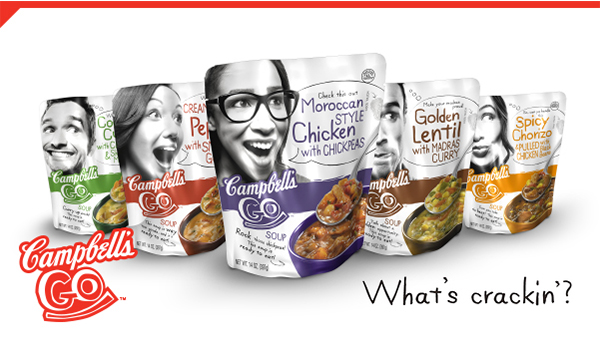
U.S. growth in Stand-up Pouches (SUP) has lagged behind Europe and other markets for years because their higher costs and poor stacking characteristics have made them less attractive compared to alternatives such as flat pouches and rigid packaging.
Stand-up pouches have traditionally been reserved for single-serve products in categories such as food & beverage.
But that’s changing as advances in barriers, laminations and fitments are expanding the number of applications for stand-up pouches.
They now have greater shelf stability and can be produced in a greater variety of sizes, shapes and closures. And by holding increased weight, they can now be used for contents that are greater than five pounds.
The broad array of stand-up pouch capabilities is especially relevant for consumer packaged goods (CPG) companies looking to differentiate their products in an increasingly crowded marketplace. When Campbell’s launched its new Campbell’s Go soups brand to target the Millennial generation, it replaced its iconic metal soup cans with stand-up pouches covered with vibrant images to attract their 18-to-34-year-old target segment.
The new Campbell’s Go brand is playing a key role in boosting the company’s soup sales. Dole, Ocean Spray and other food brands are also increasing their adoption of Stand-up pouches.
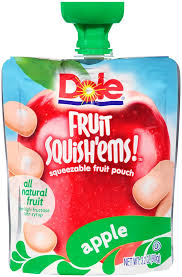
And the advantages of Stand-up pouches continue to add up, as some industry leaders note that they can be up to 95% lighter than rigid containers and reduce some product footprints by 10%.
These benefits help to trim transportation costs due to lighter shipments along with packaging material costs, and help brands increase the number of products that can be stocked on limited shelf space.
Based on our work in the packaging industry, we expect that the estimated $1-1.5B U.S. market for stand-up pouches will see high single-digit annual growth domestically during the next five years.
This diverse segment includes traditional (standard) Stand-up pouches with either fitments or substrates, as well as separate retort and aseptic offerings.
Segment growth opportunities here correlate with each category’s level of differentiation – from 78% CAGR for aseptic to 17% CAGR for standard stand-up pouches with fitments between 2013-2017 (see Figure 1).
Aseptic packaging presents compelling fundamentals; however filling speed limitations will likely place a ceiling on this market.
Demand for retorted food and pet food will keep the market growing for this shelf-stable packaging.
Additionally, stand-up pouches that include fitments (spouts, handles, etc.) and substrates (with growing usage of pouches for high-end and organic products) also have healthy growth trajectories.
The need for specialized stand-up pouch manufacturing equipment can create financial barriers to enter these new product markets.
As a result, this market includes a handful of large players that provide a suite of packaging options, along with mid-sized and smaller companies that primarily specialize in one or two capabilities.
However, given the demand characteristics for stand-up pouches, we believe that CPGs will need more suppliers with scale who can offer products in multiple segments.
Figure 1

Source : Strategic Packaging Trends
L.E.K. Consulting/Executive Insights Vol. XV, Issue 2
Written by Thilo Henkes and Carol Wingard
[ add comment ] ( 31 views ) | permalink |




 ( 3 / 2299 )
( 3 / 2299 )
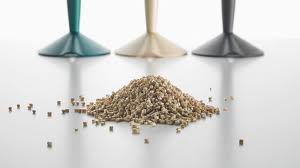
Bio-on nasce in Emilia Romagna, un territorio particolare che unito alle valide competenze delle persone che vi operano, rappresenta una grande occasione nella realizzazione pratica di progetti complessi. Per la prima volta, si è iniziato ad utilizzare la materia prima presente localmente (scarti delle barbabietole). Nascono così i PHAs (Polidrossialcanoati). Ecco la nuova sfida per il futuro. Ottima plastica (poliesteri lineari) prodotta da scarti della lavorazione agricola. Un processo unico, ancora poco noto, con la possibilità di sfruttare appieno la grande esperienza chimica italiana per costruire un grande business mondiale che già da ora ha grandi richieste. Bologna è da sempre considerata la capitale del packaging (macchine automatiche). Bio-on partecipa attivamente alla diffusione della nuova tecnologia per produrre PHAs osservando rigidamente la convenienza nei costi di produzione e lo sviluppo di un LCA rispettoso dell'ambiente: Plastica completamente biologica. Bio-on collabora con aziende in tutto il mondo. Licensing industriale per produrre PHAs di nuova generazione. Bio-on attraverso il brand MINERV-PHA™ opera in tutto il mondo, principalmente utilizzando scarti della lavorazione di barbabietole e canna da zucchero per produrre PHAs (Polidrossialcanoati).
Polyhydroxyalkanoato o PHAs sono un poliestere lineare prodotto in natura da una fermentazione batterica di zucchero. Più di 100 differenti monomeri possono essere uniti da questa famiglia per dare vita a materiali con proprietà estremamente differenti. Possono essere creati materiali termoplastici o elastomerici, con il punto di fusione che varia da 40 a oltre 180°C. MINERV-PHA è un biopolimero PHA ad elevata prestazione. MINERV-PHA ha ottime proprietà termiche. Attraverso la caratterizzazione è possibile soddisfare esigenze produttive da -10°C a +180°C. Il prodotto è particolarmente indicato per la produzione di oggetti attraverso metodi di produzione ad iniezione o estrusione. Sostituisce inoltre prodotti altamente inquinanti come PET, PP, PE, HDPE, LDPE.
BIODEGRADABILITA' NATURALE IN ACQUA
Il prodotto MINERV-PHAaccentua il suo fattore di biodegradabilità in acqua batteriologicamente non pura. Questo tipo di biodegradazione dei polimeri rappresenta il "futuro" della biodegradabilità mondiale. La scomparsa naturale e in pochi giorni di un bio polimero in acqua batteriologicamente non pura (es.: fiume) è un risultato raro e molto difficile da ottenere. MINERV-PHA è il primo bio polimero ottenuto da co-prodotti dello zucchero ad ottenere questo importante risultato. In 10 giorni all'interno di normale acqua di fiume MINERV-PHAsi trasforma in acqua di fiume oppure in acqua di mare. Il futuro della biodegradabilità è rappresentato dall'utilizzo di metodi poco costosi e naturali come la biodegradabilità in acqua. La biodegradabilità in acqua presente in natura (es. fiume) è il mezzo più semplice per distruggere e recuperare gli elementi. Ciò consente di agire sui materiali senza manutenzione (movimentazione trasporto e distribuzione). La biodegradabiltà in acqua è più vantaggiosa rispetto alla pur interessante biodegradabilità in terreno (compost). Il processo è sempre lo stesso: decomposizione dalla natura, o meglio, dai batteri. In acqua si sviluppa a temperatura ambiente e senza nessuna forzatura, per decomposizione, consentendo ad un buon bio polimero la biodegradazione completa in pochi giorni. Se uniamo queste caratteristiche alle "performance" iniziali del biopolimero (resistenza, flessibilità, stampabilità) si riesce facilmente a comprendere la qualità finale del prodotto. I PHAs sono inoltre, le uniche plastiche biodegradabili in mare.
Il PHAs REALIZZATO DA BIO-ON
Attraverso MINERV PHAs (Polidrossialcanoati messi a punto utilizzando Barbabietole) Bio-on ha individuato la possibilità di produrre industrialmente una nuova famiglia di poliesteri biodegradabili e naturali ottenuti dalla barbabietola da zucchero. Il logo MINERV PHAs contraddistingue il prodotto che sarà di volta in volta caratterizzato e protetto nel suo grado di caratterizzazione e conseguentemente commercializzato o licenziato a terzi. Polyhydroxyalkanoato o PHAs è un poliestere lineare prodotto in natura da una fermentazione batterica di zucchero. Più di 100 differenti monomeri possono essere uniti da questa famiglia per dare vita a materiali con proprietà estremamente differenti. Possono essere creati materiali termoplastici o elastomerici, con il punto di fusione che varia da 40 a 180°C. MINERV-PHA è un bio polimero PHAs ad elevata prestazione. minerv le "sfere" di colore bianco rappresentano il bio polimero minerv PHAs ottenuto da Barbabietole da zucchero. Questi elementi sono il risultato dell'accrescimento dei batteri nutriti dai sughi di barbabietola. Nella fase successiva avviene il processo di recovery (recupero di PHAs) ove vengono recuperati i Polidrossialcanoati e separati dal resto del materiale organico della cellula. Tutti i materiali di scarto (modeste quantità) vengono reinseriti nel ciclo produttivo iniziale per nutrire nuove colonie batteriche assieme ai sughi intermedi di barbabietola (Patent esclusivo Bio-on).
[ add comment ] ( 124 views ) | permalink | related link |




 ( 3 / 2634 )
( 3 / 2634 )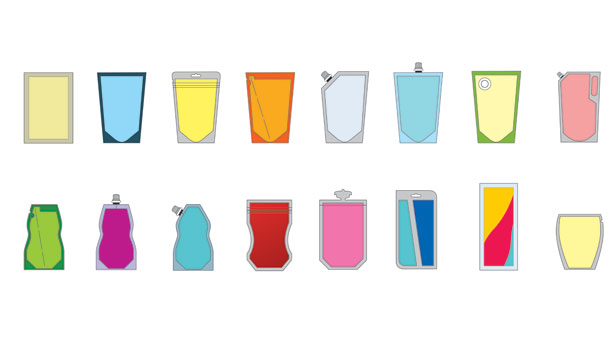
In celebrating Flexible Packaging magazine’s 15 year anniversary, it creates a unique opportunity for us to look back from where we came and also forward as to where we are headed with regard to the bright and exciting opportunities that the future will hold for the flexible packaging industry, and in particular, the popular standup pouch packaging format.
Looking back over the past 15 years and beyond, we can surely see that the flexible packaging industry has been very busy creating a “re-packaging revolution” that has now spearheaded a shift into a new age of packaging standardization which is clearly underway.
The elegant and modern standup pouch and other evolving forms of flexible packaging will continue to change the world as we see it on so many levels.
The standup pouch can be produced in a multitude of formats and designs including the popular classic trapezoidal shape or customized with a unique shape to provide not only distinction on the shelf, but to also add style, convenience and added functionality to suit an ever increasing array of product applications. The standup pouch can be customized from a basic laminated structure to a multi-layer barrier material to accommodate an oxygen sensitive product or the most complex application. It can be beautifully printed with multiple color rotogravure, flexography or digital printing and even successfully full panel labeled for initial new market introductions.
The standup pouch can be produced on-line from rollstock or provided as a pre-made pouch – ready for filling and sealing, mainly dependent upon complexity of application, volume or operator core competency. Incorporate a reclosable zipper, slider, memory strip, spout or dispensing feature and you have a highly functional package which offers broad consumer appeal on a multitude of levels.
The standup pouch has proven to add value and create marketing opportunities where a traditional rigid container may fall short. In some cases, companies have partnered the standup pouch with rigid packaging to create both a choice for their customers, and a clever marketing strategy utilizing the pouch as a refill to promote brand loyalty and address desired sustainability at the same time. This approach also provides an opportunity to create a “transitional strategy” toward the standup pouch as the possible primary package of choice in the future.
Today, you cannot enter a retail establishment without seeing a multitude of flexible packaging formats covering a huge range of new innovative, value added product categories. The ability to peg or stand the pouch has also proven to provide a major advantage of marketing versatility as the standup pouch can be efficiently marketed in a variety of ways including on the shelf as a stand-alone presentation, in a tray as a shelf ready presentation, multi-packed in a carton or case and even pegged or hung as a grab and go display. Aisle by aisle, shoppers are being introduced to packaging changes and we are seeing this packaging shift impacting a broad range of new product introductions and applications.
New Value Added Product Introductions
Increased versatility in marketing throughout the retail environment is bringing packaging differentiation impact to market while stimulating new sales. We have seen complete product categories shift into a multitude of innovative flexible packaging formats including the standup pouch, quad seal-block bottom bags and even stick pack single serve formats and other creative designs.
Fifteen years ago, the standup pouch was still just considered a novelty format by many in the packaging industry. Some skeptics were hopeful that the standup pouch would simply just disappear like so many other disruptive packaging formats introduced over the years.
This time was different – a handful of committed industry visionaries all with a keen insight to the future nurtured and promoted the standup pouch market in North America and the rest is history (some of which is still history in the making).
A History of the Standup Pouch
In order to appreciate the magnitude of change taking place in the market today we must first look back a couple of decades to when there was literally just a handful of standup pouch products in the North American market.
At that time, Kraft’s Capri Sun® took the bold step to enter the market with single serve beverage pouch sold in a multipack of 10 units. This is the same Capri Sun pouch that some of us and our children grew up with as an alternative to the school lunch milk carton. Who would have imagined that this single serve bottom gusseted standup pouch with its attached overwrapped straw would re-invent the way we and a generation of children thought about and accepted pouch packaged products in our everyday lives.
The Capri Sun pouch product line grew into billions of pouches annually over the next couple decades and today reportedly exceeds 5 billion single serve units globally. As mentioned, this single product market success, more than any other, pushed the market forward and has since been used as a model to illustrate consumer acceptance, importance of convenience and the possibility of demographic acceptance of a packaging format; after all, the majority of the population consuming Capri Sun are children between the ages of 4-12 year old. And who was buying this product for those children, but young moms and dads all growing up with a new innovative pouch product that would form as the foundation of acceptance for a multitude of new successful pouch product introductions. To address this changing demographic, Capri Sun has now been launched in a larger standup pouch with spout for the now loyal “tween” generation of Capri Sun lovers.
A multitude of products have followed Capri Sun and are still coming along at an increasing rate, with no end in sight. A new generation of “pouch consumers” setting up the perfect storm of acceptance toward other newly introduced standup pouch product applications.
Making the transition from traditional packaging to the standup pouch even more enticing was the ability to add a zipper reclose device to the flexible package format, ideal for snacks and other suitable product applications. The ability to reclose the flexible package truly revolutionized the flexible package by providing convenience and functionality provided even more reason to consider replacing a canister, composite can, HDPE bottle or bag-in-box package format.
An Opening for Primary Flexible Packaging
Providing this momentum was the popularization of Ziplock bag, which was introduced to the US consumer in the early 1980s and quickly became a staple in the US home for repackaging food products, children’s lunches and leftovers to the tune of billions and billions of bags.
The interesting thing here was that the US consumer was being educated on using and adapting to the concept of zipper reclosable packaging. And what were they doing with these billions and billions of reclosable zipper consumer bags? They were repackaging their food products at home, in many cases repackaging their cereal, cookies, crackers, snacks, frozen foods, etc. In doing so, they were in many cases disposing of the original packaging along with the highly valuable brand information, making the “repackaged” product even more generic that the most generic store brand.
I have seen this occurring in a much larger scale in parts of Europe, whereby consumers are charged based on the weight of their trash disposal and as a result, many consumers leave behind at the supermarket any perceived over-packaging. I witnessed firsthand, the outer carton from cereal purchases stacked not so neatly in piles near the front of the grocery store. I was curious to see customers leaving the store with only the unprinted inner bag of cereal. Not only leaving the cereal box behind, but perhaps more importantly, the printed brand information on the box, now just an unlabeled, generic bag of cereal, any brand manager’s nightmare.
Standup pouch packaging offers a potential solution to this situation by eliminating the carton and providing instead a pre-printed standup pouch with an integrated reclosable zipper feature.
Today, many consumers have less of a need to repackage their food products at home since many companies now utilize zippers and closures in their primary flexible packaging, enabling the product to stay with the original “branded” packaging throughout its entire life cycle. The product also retains its freshness and at the same time adds consumer convenience and encourages repeat sales, as well as critical brand loyalty.
Reclosable Packaging Brings Convenience
The convenience of flexible packaging has now been further enhanced by the incorporation of spouts and fitments which can now be applied to the standup pouch format now growing in popularity for liquid or puree type products.
A multitude of new and innovative product applications are springing up in North American and delighting both the consumer and the companies introducing these products to the market through increased sales. Popular products include apple sauce, blended fruit purees, baby food, beverages, energy drinks, condiments and a multitude of others.
Keep in mind that many of the products being introduced in the standup pouch are not always new; as a matter of fact, many would be considered commodity-based products that have been on the market for many decades. What is new is their re-introduction and re-invention as modern, convenient products suitable for today’s on-the-go culture.
How do you stimulate sales? How do you capture or increase market share? You can reduce the price and buy more of the business or perhaps advertise more, both of which are very expensive and potentially counterproductive.
Another strategy may be to re-invent your product and grow your market by being different than the established traditional leaders. Many companies are doing just that by beginning to re-position their products in a different way, a modern way that is appealing to a new consumer demographic or customer base. Offering a choice to the consumer may inspire them to try your product and your brand and this could lead to increased market share and profits.
There are many companies starting to utilize this repackaging strategy that can be seen in the market today. These segments are growing incrementally with the combined potential representing near term growth in the multi-billions of pouches and replacing multi-billions of older traditional packaging formats with the re-inventing entire categories:
Agricultural Products
Baby Food
Baking Mixes
Biscuits, Cookies, Crackers
Condiments
Confectionaries
Croutons & Salad Toppings
Detergent Pods & Liquid Detergents
Dried Fruits & Nuts
Energy Drinks
Fresh Produce
Frozen Entrees & Meal Kits
Frozen Meats, Poultry & Seafood
Frozen Vegetables & Fruits
Fruit Purees & Yogurts
Granola Cereals
Ice Cream Toppings
Icings & Frostings
Instant Beverages
Instant Cereals
Instant Soups & Side Dishes
Microwavable Convenience Meals
Motor Oil
Pet Food & Pet Treats
Rice & Pasta
Shredded & Cubed Cheese
Snack Foods
Soups & Sauces
Spices & Rubs
Tuna & Specialty Fish
Wine, Wine Coolers & Alcoholic Beverages
In the flexible packaging industry, we applaud this pivot away from traditional packaging and celebrate every new application that shows up on the retail shelf. However, not everyone celebrates the shift toward flexible packaging. Perceived and real complexities of “change” or the “reluctance to change” is still alive and well. It has never been easy to shift from something that works and it’s even more difficult to change or shift from something that has been accepted in practice for 100+ years to something new and unfamiliar.
We can certainly understand this regarding the introduction to new technology and its impact in our own everyday life. Do we not push back; are we still not pushing back in some form or fashion? In order to move forward, it is important to respect what was done previously and the potential chaos that shifting to something new and innovative may cause; but, properly managed and facilitated change can be a wonderful way to create new opportunities for those willing to step out and embrace change to their advantage.
This is exactly the reason why it is so difficult to change North America from a bottle, jar, can, canister or bag-in-box format to a flexible packaging format as the impact of change will affect almost every aspect of what is perceived as normal from incoming logistics through the retail shelf and beyond.
As a result, adapting or implementing to any change may be best accomplished in a gradual or transitional way, not abruptly or without proper due diligence. Some may say, “There’s no reason to ever change from what has worked for the past 30-50 years.” Well, that may not be such a wise business or marketing decision. Keep in mind that what is now considered standard packaging for the past 30-50 years also went through an evolutionary process of refinement and implementation. Consider the transition from glass bottles to PET; steel cans to aluminum; wooden crates to corrugated; as well as the shift to many other transitional and revolutionary packaging changes.
The strategy of not transitioning ones packaging to adapt to new and evolving consumer trends, changing life styles, market conditions or even to a revolutionary new package format could cause one to experience a slide backwards from a long established market position or perhaps losing share to a new breed of agile entrepreneurial companies with nothing to lose and everything to gain by being different and more appealing to today’s consumer and new age retailers.
Retailing and merchandising has also dramatically evolved and matured over the past 15 years going well beyond the traditional grocery store or super market shelf to a new age of mega-retailers. All of these new marketing outlets are looking to appeal to the consumer in a different way by providing a unique shopping experience from the traditional super market.
Super Center
Club Store
Whole Food Markets
Convenience Store
Private Brands
These new-age retailers are creating a point of differentiation through the introduction of exciting new products, goods and services, many of which are presented differently than normally found at the traditional grocery store or supermarket.
New methods of packaging (flexible packaging in particular) are becoming an important component of this new marketing strategy to add excitement and reposition both new and mature traditional products in a different way throughout the retail environment.
We also are seeing dramatic growth of private label or store brands within these retail outlets; many of which have embraced new and innovative packaging as a means of leaping the major brands that apparently have difficulty in changing from their burden of existing infrastructure of older traditional methods of packaging, including bag-in-box, bottles, cans and jars, etc.
Due to the demands for sustainability from mega retailers like Walmart, companies are also now starting to realize, more than ever, the true cost of many traditional packaging methods, particularly relating to the total cost of packaging material – component on logistics within their operations. Today CPGs are being pushed to dive deeper into their operations to reduce costs and over packaging. Packaging cost reduction and associated factors are now being further scrutinized and analyzed in an effort to meet the demands for lower cost expectations.
Transportation
Warehousing
Material Handling
Packaging Process Complexities
Over Packaging –Redundant Packaging
The biggest impact of these factors has been the increasing cost of fuel impacting transportation and its affect on logistics. In addition, multi-component packaging is now also under scrutiny with its impact on sustainability. These factors have caused many companies to rethink their choice of packaging and we are now beginning to see the results of this process being reflected in the new packaging that is showing up on the retail shelf.
There is no question that flexible packaging is now being taken more seriously than ever as a truly viable alternative to many forms of traditional rigid packaging. This trending shift away from rigid packaging has begun a gradual tipping point that will have ramifications for decades to come.
The flexible packaging industry’s ability to now provide packagers the choice to utilize pre-printed rollstock or pre-printed pre-made standup pouches has further enabled many more companies to enter the market utilizing pouches.
This choice offers both large and smaller companies the opportunity to position their product in a pouch format utilizing lower cost fill/seal machinery, but still knowing that as their volumes increase, they can implement a form/fill/seal/rollstock strategy to further reduce packaging cost as they grow their business moving forward.
Our Next Strategy
Contract packagers have been a very strategic means of growing the standup pouch business over the past fifteen years. They offer the opportunity to enter the market without the typical risk and capital investment associated with implementing a new packaging format. The North American contract packaging infrastructure will continue to grow and prosper in supporting the shift toward standup pouch packaging and will be an important piece of the puzzle as the market further develops.
As an industry, leading the charge in the “Repackaging of America,” it will also be critical for us to continue to communicate the overall and total benefits of flexible packaging, as compared to other forms of packaging in relationship to energy consumption, logistics, source reduction and the total impact from an environmental perspective. Education will be the key to further drive the momentum of change.
We will also need to push forward with continuous improvement of our material developments, printing methodologies, pouch making and flexible packaging machinery technologies. All of these critical areas will need continued close collaboration by all parties to meet the global challenges and growth opportunities coming our way.
I’m often asked the question “What’s next?” “What’s the next big thing?”
I am always somewhat perplexed by this question, particularly when it is asked by my own flexible packaging industry colleagues, as it illustrates to me that many are looking beyond the opportunity they have in front of them, beyond the great packaging shift that is presently underway.
From my perspective, we are living the next big thing in packaging at this very moment in time. Of course we will see new flexible packaging iterations of the standup pouch format, but at this moment, we are just getting started with a revolutionary packaging format that has all the right stuff for this time in history.
We have seen what has occurred over the past 15 years; now let’s take a moment and celebrate what is here to stay for the foreseeable future. Embrace it and enjoy the fact that you as a flexible packaging professional are making history and truly impacting the way packaging will be done for decades to come.
By Dennis F. Calamusa
President
Alliedflex Technologies, Inc.
[ add comment ] ( 66 views ) | permalink |




 ( 3.1 / 2666 )
( 3.1 / 2666 )

 Calendar
Calendar